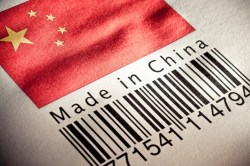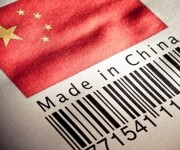 A version of this article originally appeared on Climate Progress.
A version of this article originally appeared on Climate Progress.
In a long-awaited decision, the U.S. Department of Commerce has issued a preliminary decision to apply tariffs to Chinese-made solar modules being imported into the U.S. The tariffs range from 31 percent to 250 percent.
The preliminary tariffs were issued after a lengthy investigation by the Commerce Department into whether Chinese companies are “dumping” solar panels into the U.S. market below cost. These tariffs follow a March decision to issue small countervailing duties on Chinese module producers that are getting illegal domestic subsidies, according to the Commerce Department.
Today’s issued tariffs are as follows: Trina, 31.14 percent; Suntech, 31.22 percent; and 31.18 percent for all other Chinese producers that participated in the investigation. For companies that did not participate, Commerce has slapped a massive preliminary tariff of 249.96 percent.
The combination of these new tariffs and the countervailing duties will add substantial cost to imported Chinese solar panels. With panel prices hovering in the $1-per-watt range, it could add around 30 cents to each panel for leading producers, and vastly more for producers that didn’t get involved in Commerce’s investigation.
These are preliminary fines and can be negotiated and changed before Commerce makes a final decision. The solar industry’s trade group, the Solar Energy Industries Association, has called on the U.S. and Chinese governments to negotiate a settlement — potentially resulting in more moderate tariffs:
The solar industry calls upon the U.S. and Chinese governments to immediately work together towards a mutually-satisfactory resolution of the growing trade conflict within the solar industry. While trade remedy proceedings are basic principles of the rules-based global trading system, so too are collaboration and negotiations.
Importantly, disputes within one segment of the industry affect the entire solar supply chain — and these broad implications must be recognized. In addition, the U.S. solar manufacturing base goes well beyond solar cell and module production and includes billions of dollars of recent investments into the production of polysilicon, polymers, and solar manufacturing equipment, products which are largely destined for export. If the U.S.-China solar trade disputes continue to escalate, it will jeopardize these U.S. investments.
Given these broader implications, it is imperative that the U.S., China, and other players in the dynamic global marketplace work constructively to avert or resolve trade disputes that will ultimately hurt consumers and businesses throughout the solar value chain. [my emphasis]
The solar industry has been on edge since last October, when the manufacturer SolarWorld and six other anonymous companies issued a complaint about illegal trade practices. They argued that China’s subsidies were allowing companies to dump panels below cost, thus driving U.S.-based manufacturers out of business.
However, downstream developers have enjoyed falling panel prices — a factor that has allowed the industry to expand 109 percent in 2011. A group of solar companies known as the Coalition for American Solar Energy has been staunchly opposed to tariffs, saying they’ll dramatically drive up the cost of solar installations in the U.S.




